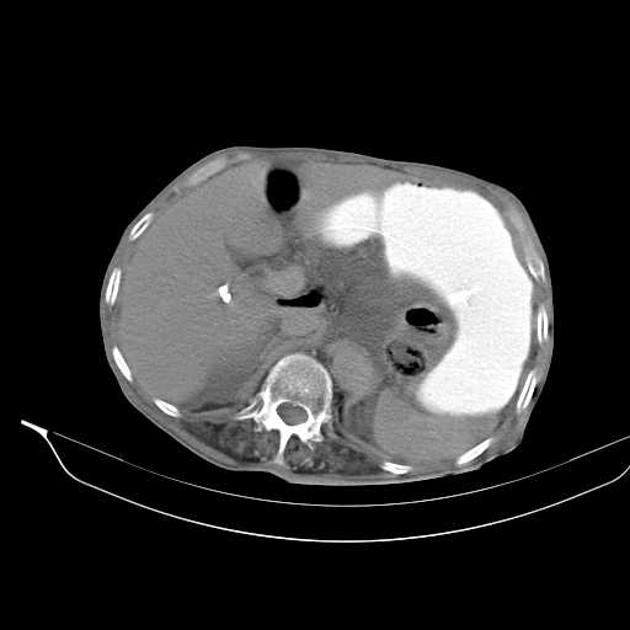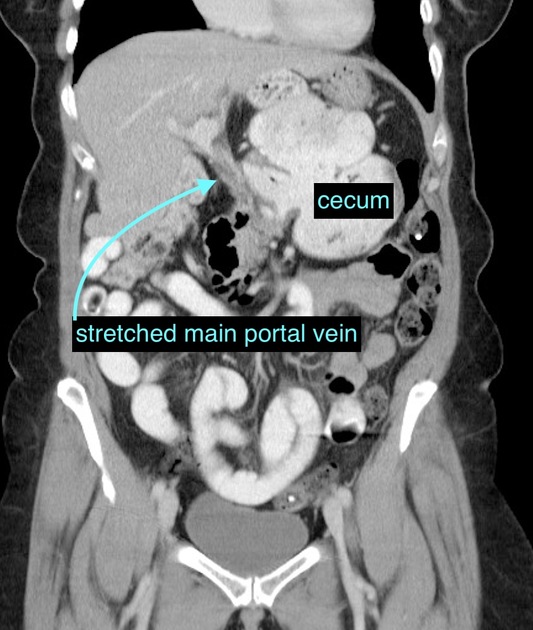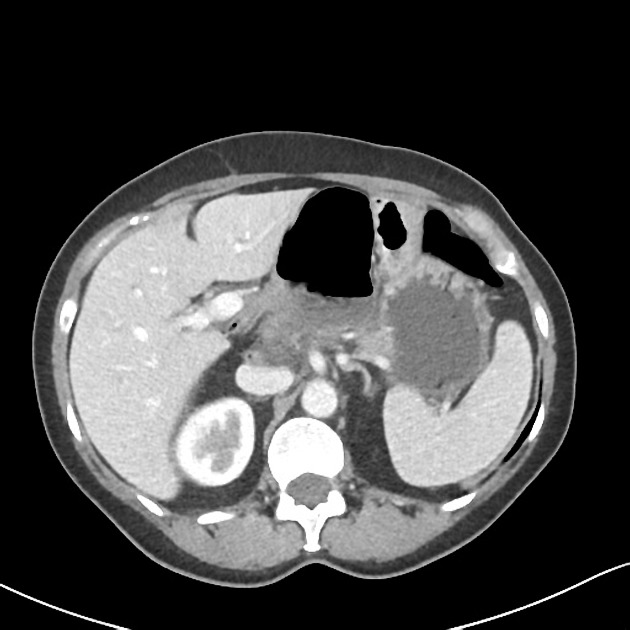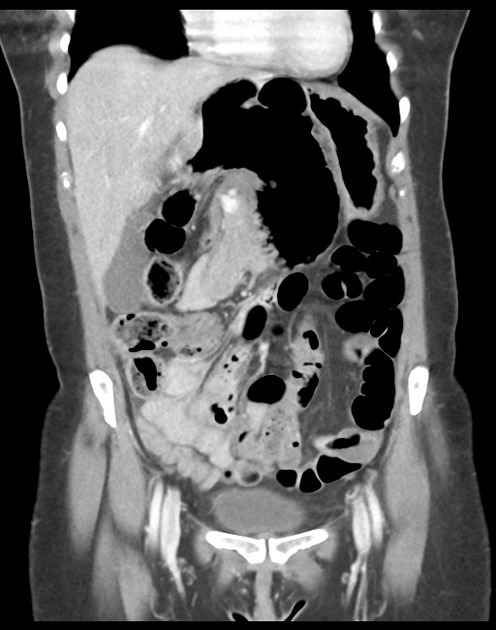Lesser sac hernias (alternative plural: herniae) are a type of internal hernia, where abdominal contents protrude through the foramen of Winslow, hence they are also known as foramen of Winslow hernia.
On this page:
Epidemiology
Lesser sac hernias are rare, accounting for <0.1% of abdominal hernias and 8% of internal hernias 1,2.
Risk factors
- common intestinal mesentery
- intraperitoneal right colon
- long small bowel mesentery
- large foramen of Winslow
- elongated right liver (e.g. Riedel lobe)
Pathology
Typically contains small bowel only (~67%) but may also contain cecum/ascending colon and less commonly transverse colon, gallbladder, or omentum.
Radiographic features
Plain radiograph
- gas-filled loops of small bowel in the upper abdomen
CT
- mesenteric fat/vessels posterior to portal vein, common bile duct, hepatic artery and anterior to the inferior vena cava
- mesenteric vessels passing into the lesser sac via the foramen of Winslow
- gas and/or fluid in the lesser sac with bird beak sign towards the foramen of Winslow
- abnormal cecal position
Differential diagnosis
- left paraduodenal hernia
History and Etymology
It is named after Jacques Benigne Winslow (1669-1760), a Danish-born French anatomist.








 Unable to process the form. Check for errors and try again.
Unable to process the form. Check for errors and try again.